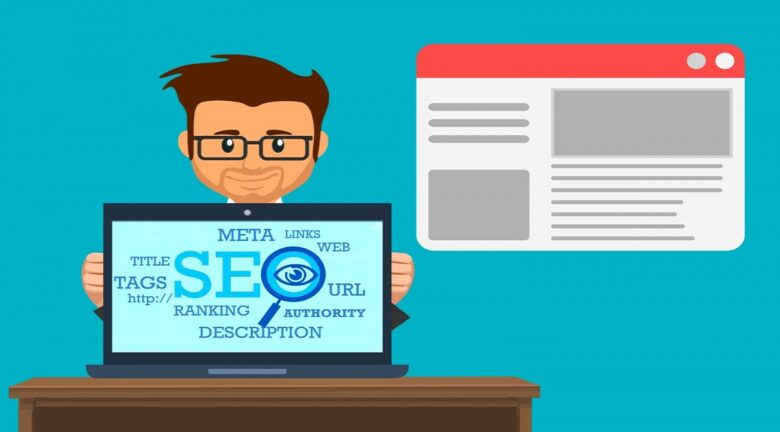No matter how big or small your business is, a great website design is critical for finding success online. For your company to thrive and be at the top-most of the search engine ranking results, you must learn and utilize the correct SEO strategies to ensure consumers head to your page over your competitors. If you have resources to spare then the best option is always to hire professionals to do these tasks for your and our definite recommendation for these tasks is the AIAD agency
Visit feedsportal.com to know how the search engine algorithm works. It will motivate you to implement SEO strategies to improve your web design.
While you may already have an easy to navigate the page and use relevant keywords to connect visitors to your page, one of the key ways to determine relevance is by using search engine algorithms that gather information from webpages. Whether you’re a startup or have just established a business, here are some of the best SEO tactics that will improve your web design.
1. Make Your Page Mobile Friendly

How your website looks, is incredibly important for consumers. With many of us leading busier lives than ever before, no one has the time to sift through confusing web pages. And when you factor in how many people scroll on their mobile devices.
Instead of using a laptop or computer, you must make sure your page is responsive and mobile-friendly to take advantage of this traffic. First impressions count. So, if you have not optimized your website for mobile users, you can’t expect people to stick to the site.
2. Optimize Images

One of the key aspects of web design is images and the kind of feelings they convey to audiences. If you want to rank your website higher in the results of the search engine, then you have to focus on the images and it should be well-optimized.
You mustn’t sacrifice the quality of your images. Otherwise, consumers may click off your page quickly. If images are taking quite a long time to load, they will send your visitors somewhere else. And you may find Google drop you down the list of search results too.
3. Design Friendly URLs

URLs shouldn’t be hard to crawl in a nutshell, meaning you have to make them user friendly. Friendly URLs are easy to read, helping the user know whether to click on your page.
You must be aware that some CMSs will automatically generate codes and numbers and add them to your URLs, whereas the good ones will let you beautify your URLs, so users know what to expect before they click.
4. Keep Your Content Fresh

If there’s one thing you need to learn about search engines, they don’t like stale content. If your website has not yet been updated in many months, you won’t have a good SEO ranking. Although it may seem like an obvious tip, you must keep your content fresh and regularly update your website.
Users need to be drawn in from the offset. So, if your content doesn’t spark their interest, you will lose traffic within an instant. Creating engaging content is what will set you apart from rivals.
With over 1.5 billion live web pages globally, your business website needs to have excellent SEO to be seen by consumers. Ranking well on Google searches can boost conversions, increase traffic to your page, and most importantly, increase revenue.
5. Create an XML Sitemap

If you want to make your website SEO-friendly, then it is crucial to take care of the XML sitemap. You must have the sitemap to provide an amazing web experience to users. Many search engines like Google Chrome, etc., search for the sitemaps when it crawls to your website.
It helps in improvising the visibility of your site and allows easy navigation to various webpages. If you change anything website, the crawler will easily know what happens in it. Therefore, it is easy to detect any changes in your site.
6. Use Appropriate Keywords to Rank Your Website

You have to focus on certain keywords and target them in your content. You have to place them naturally so that it does not like you have stuffed them forcefully. The crawler can easily come to your page if you have targeted keywords well.
On the other hand, users also find your content easy and natural, even if you have placed any keyword in it. Google AdWords is a great way to know what your customers are looking for on your site. It will help you to know relevant keywords and what will be the outcome when you target them.
7. Consider Unique Meta Data

In metadata, you must write title, keywords, as well as, description. Ensure that the entire data must be unique on every web page. Sometimes, a developer does not remember to change every page’s metadata, and hence, the same data is saved on every page.
It should be avoided, and hence, you can do it by checking every page individually and write vital and unique things. You can also target various keywords in the metadata to drive the attention of the crawler. It is quite simple to determine the structure of the website by using search engines. Therefore, the metadata must be different and unique.
8. Appropriate Use of Heading Tags

The use of heading tags is important to explain the HTML structure of the webpage to the search engine. There is huge importance given to these tags, and hence, you have to assign tags carefully.
You have to keep the main title in the H1 tag, and hence, you can assign sub-headings to the H6 tag. It is important to understand the hierarchy of the content to assign tags carefully. If you do not know how to use them appropriately, make sure that you research well before implementing it.
The Bottom Line
You have to see your website from the perspective of SEO to make it search-friendly. After creating a website, the main aim is to increase the traffic, and it is possible when you make certain SEO strategies. Improving any element in your site will make it closer to visitors.
The crawlers must know what’s happening on your site to keep it updated on the search results. If you want to get positive results, make sure that you follow the tactics mentioned earlier.

